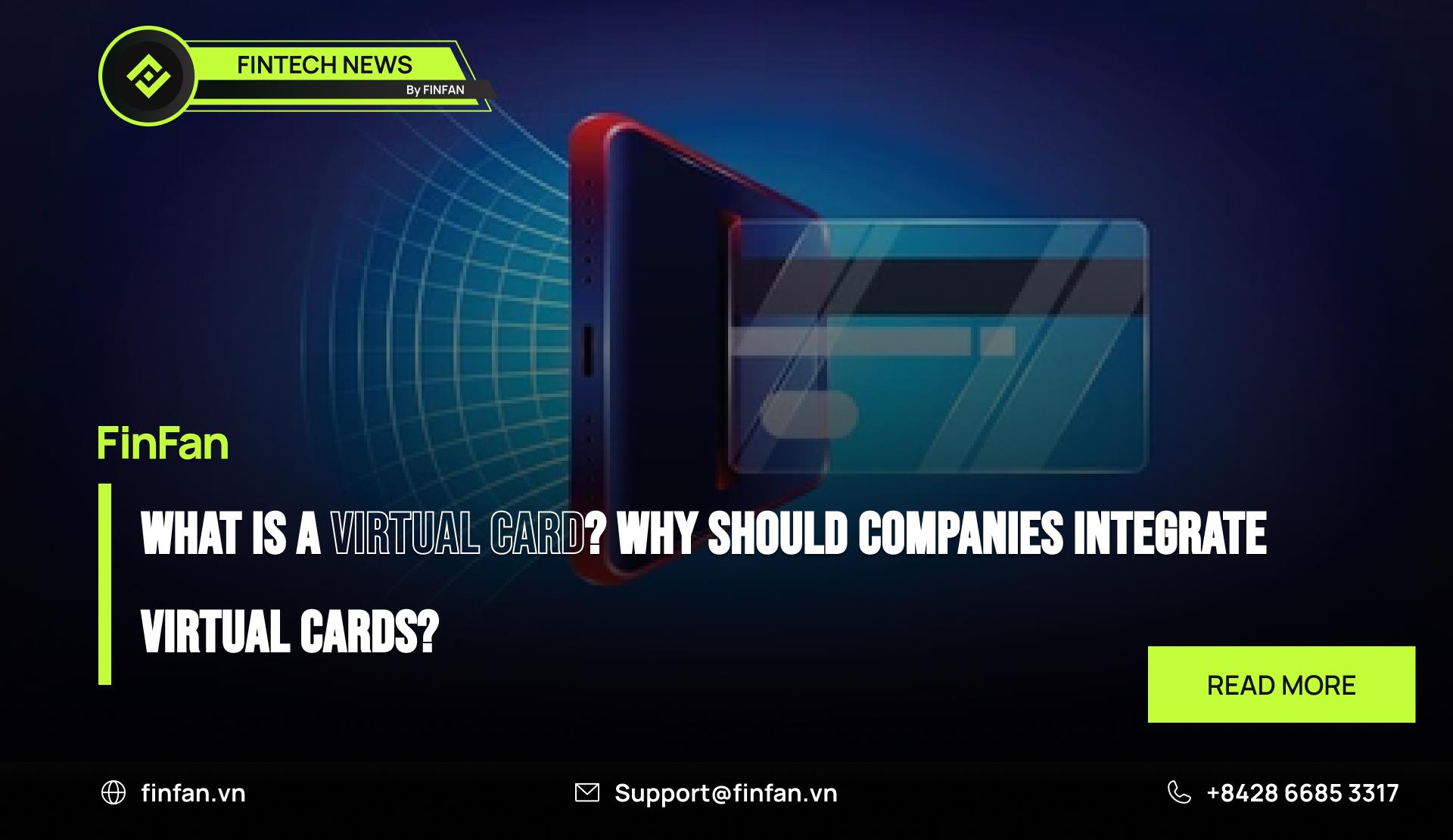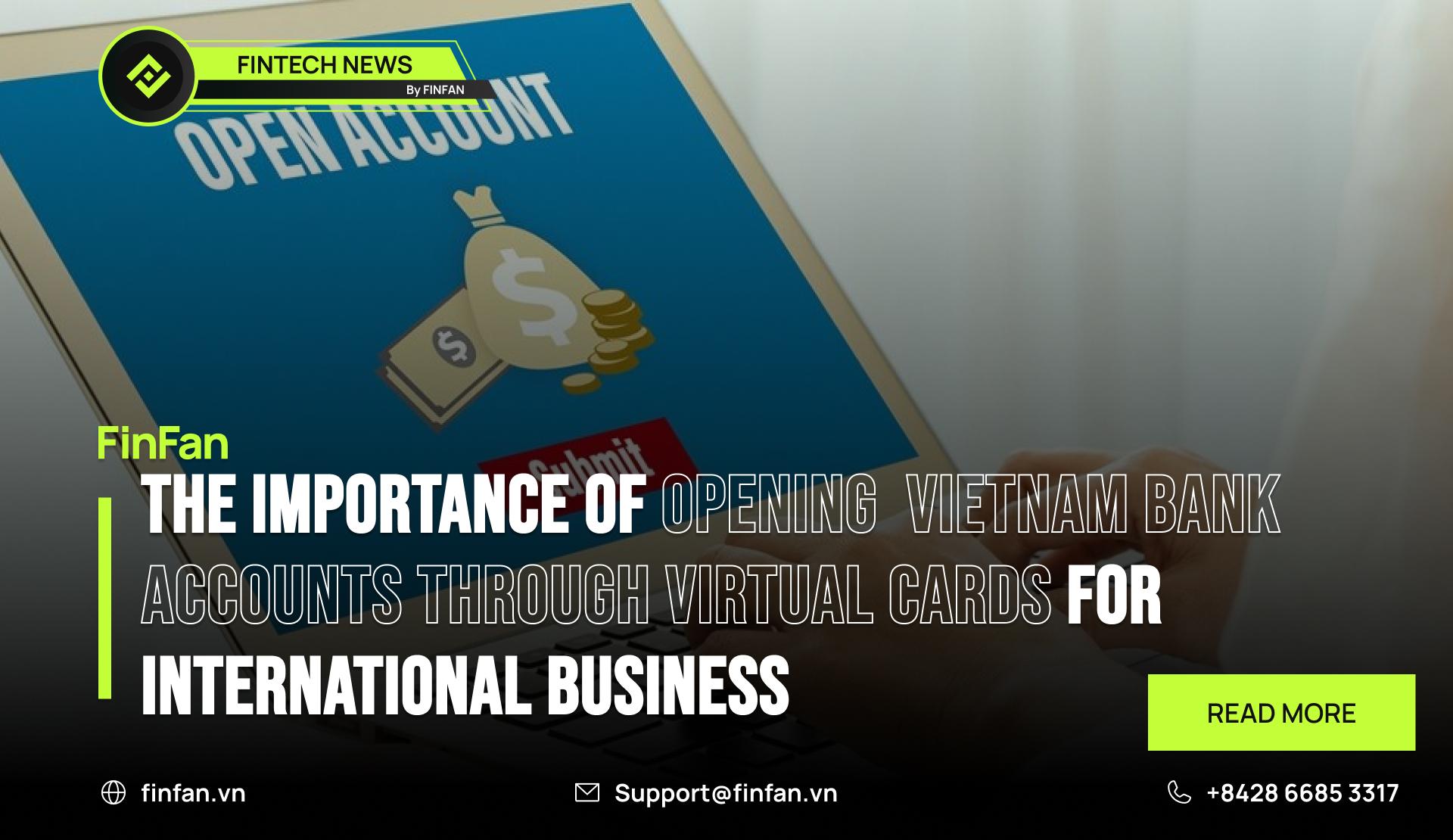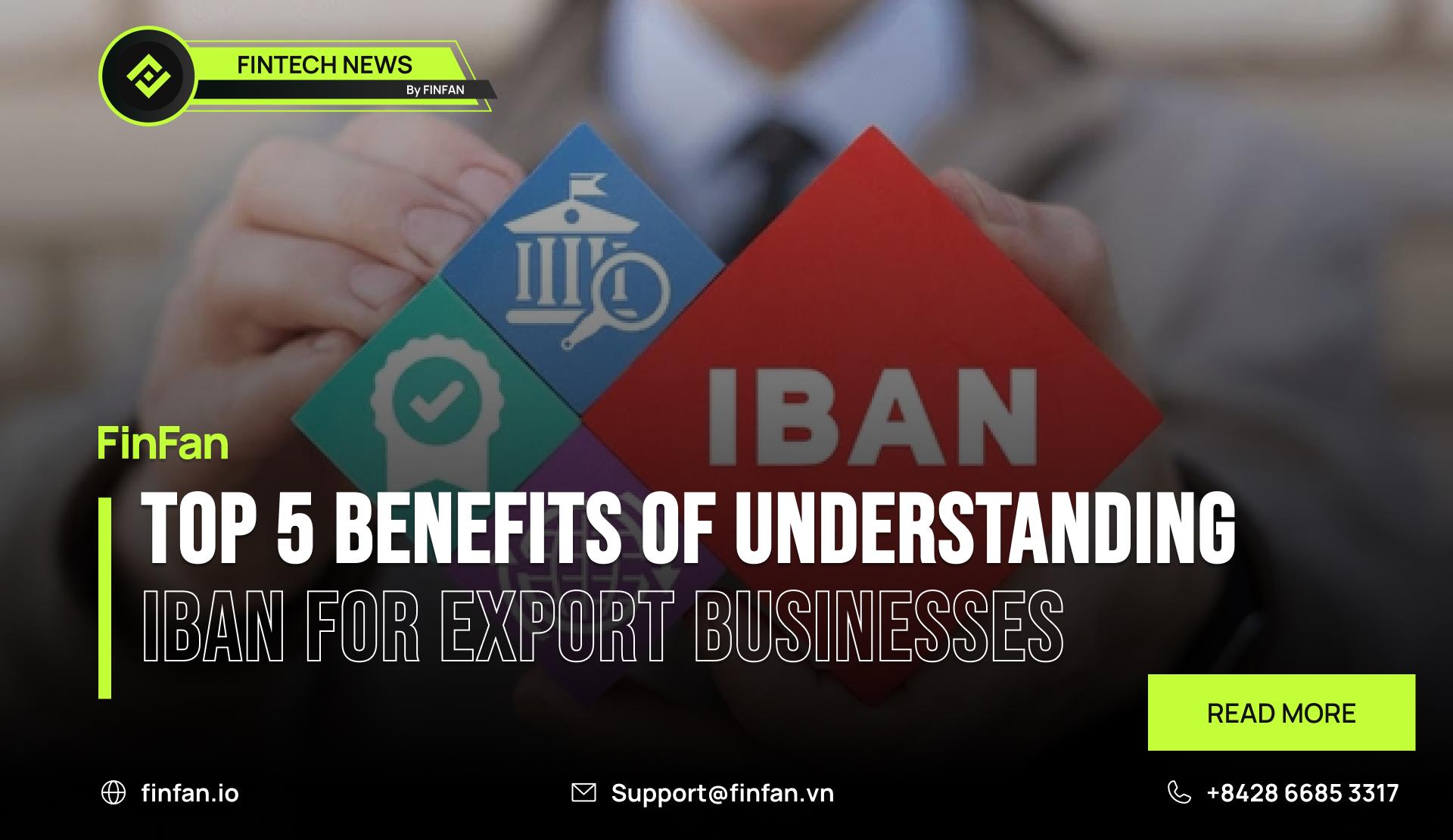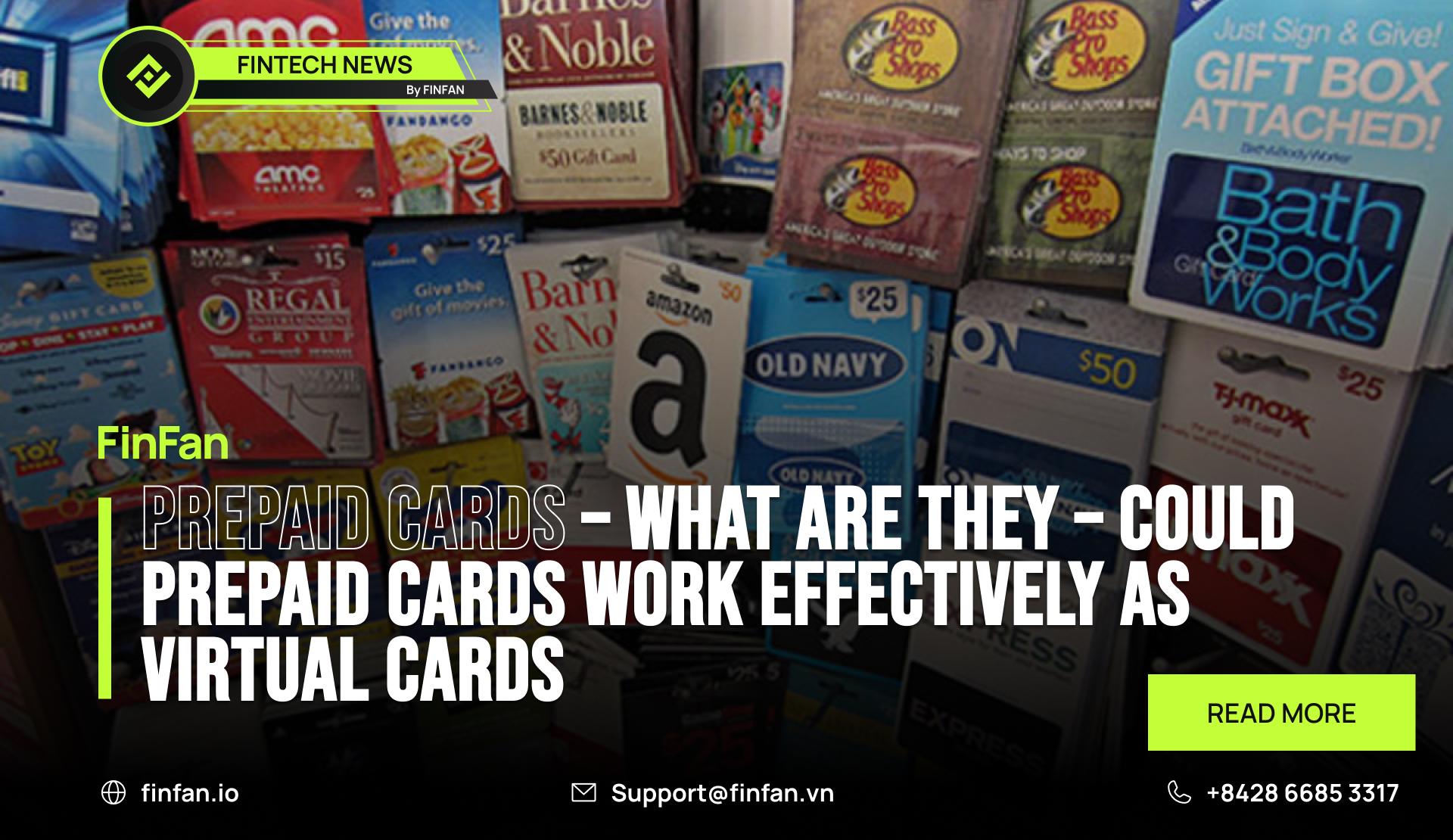What is a virtual card - Why should companies integrate virtual cards

Virtual card is a phrase used by many financial technology people recently to refer to the use of a non-physical card to pay for any product or service online without having to re-enter account and card information many times and encounter many problems related to security as well as cyber security for cardholders.
So, what is a virtual card and why should businesses integrate virtual cards for themselves? Let's find out with FinFan through the following article.
What is a virtual card?
To better understand virtual cards for businesses, we first need to understand cooperate cards, a type of card that many businesses are using today.
Types of corporate cards.
Corporate expense management cards
This type of card was created to manage variable costs and fixed costs of the business such as employee salaries, employee insurance, electricity, water, and premises rental, ...
These cards are integrated with expense management systems, providing businesses with real-time transaction tracking and categorization. They often have 2 types of corporate expense management cards.
- Corporate credit cards
A business cooperate card is a type of credit card issued by a bank to companies and businesses. This is considered a comprehensive solution to help businesses conveniently spend and manage their budget.
With the advantage of spending now and paying later, businesses will be able to replenish working capital promptly and minimize risks compared to cash circulation. There are many types of corporate credit cards depending on the needs of the business:
- Corporate travel cards
The cooperative travel card is a type of co-branding credit card between 3 sides: banks, the card receiving company, and a company that provides the services for traveling (especially a travel agency or hospitality company like a partner of some special offers). The purpose of issuing this card is to pay for expenses incurred during company employee trips.
When businesses open this card, they will receive all incentives from train and plane tickets to hotels and restaurants. A special point is that users can also receive cashback or accumulated points as well as insurance payments (if any) for their card users (often mentioned in detail about the card's benefits, customers should read it carefully before opening it).
An example of a corporate travel card is the SeATTravel Visa credit card of SeA Bank or Shinhan Visa Travel Platinum International Credit Card in Vietnam.
- Corporate Card for E-commerce
This card is also a co-branding credit card between the bank, the company that needs to be provided the card, and a certain e-commerce platform when the above company has many transactions with this e-commerce party such as Shopee, Lazada, etc. for some incentives as well as checking transactions on these e-commerce platforms (often mentioned in details about the card's benefits, customers should read it carefully before opening it).
The corporate card for e-commerce enables online brands and retailers to bypass the problems of legacy banking systems and delivers a fast product, has far greater functionality, and is much simpler to manage than any other credit card in the marketplace.
Moreover, merchants can use this card to pay advertising fees from social media campaigns such as Facebook, Instagram, TikTok, etc. suitable to the needs of each shop owner or business doing business on the e-commerce platforms.
An example of a corporate card for e-commerce is the Sacombank Mastercard Digital card or SCB BIZ MASTERCARD in Vietnam.
- Corporate prepaid cards
Corporate prepaid cards are funded by the company with a predetermined amount. These cards are very similar to normal debit cards.
Employees can use these cards until the available balance is depleted or till they hit the spending limit mark that has been set on their card.
An example of corporate prepaid cards is KORCHAM - SHINHAN CORPORATE DEBIT CARD in Vietnam.
Virtual cards, a special type of corporate cards
Like the types of corporate cards mentioned above, virtual cards are also a type of card provided to businesses to manage their revenue and expenditure.
The only difference between them is that virtual cards are not issued like physical cards but are integrated into the business's payment system itself and they can be issued by a fintech company that partners with banks in the form of NEOBank or directly by a bank in the form of digital banking.
Virtual cards applications
Here are the 3 most common applications of virtual cards:
- Purchasing cards
Purchasing cards or p-cards are the form of virtual cards that give entrepreneurs the solution for payments just like credit cards. The special feature of this type of card is it can help users skip the cumbersome procedures of submitting purchase requests, invoicing, and awaiting permission.
Furthermore, when using a p-card, users do not have to wait for a long approval process to receive a refund from the company for the private amount spent on some necessary company activities or business trips.
Despite being so convenient, p-cards are still very safe for the business's financial system when they are integrated with modern tools to manage and optimize cash flow most reasonably.
- Virtual credit cards for travel
Just like credit cards for traveling above, virtual credit cards for travel have the same function. However, it is more often used on online platforms through some OTAs such as Booking.com or Traveloka.
For online travel agencies, slow, high-risk payments are eating into shrinking profit margins. Reconciliation and settlement delays are also creating funding gaps that can shut down businesses.
For that reason, OTA companies need a virtual card for travel solutions to be able to perform those operations as instantly as possible.
- Virtual cards for e-commerce
Just like the corporate card for e-commerce, however, this type of virtual cards often be provided by a fintech company.
*As an e-commerce business owner, you would know many of the backend tasks that need to run smoothly to keep your customers happy.
A few of these tasks involve expenses and payments from your end. For these processes, virtual cards for e-commerce businesses become necessary to ensure that your e-commerce business doesn’t suffer.
. Payments to vendors or suppliers
. Operational expenses*
*Source: Volvopay
Read more about this application of virtual cards:
. What is purchasing cards? Does it affect the finances of the business?
. Virtual cards for traveling – A new technology solution for OTA businesses
Why should companies integrate virtual cards?
Here are 3 reasons why business owners should integrate virtual cards for themselves:
The cashless payment movement is increasingly popular.
After the global COVID-19 pandemic, the cashless payment movement has been growing rapidly. At this time, businesses should also equip themselves with new payment methods that are more modern, faster, and most importantly safer.
In particular when society is in a situation where it is very reluctant to have direct contact with each other, as in recent years when major pandemics continue to occur.
Virtual cards are often issued by fintech companies.
Unlike traditional banks, fintech companies have in-depth expertise in both finance and technology and can easily integrate according to the demands of each subject for a specific purpose.
Business owners or heads of finance departments can now present all the problems in managing their income and expenses, the tech department of fintech companies will listen and make appropriate API connections to address those issues.
Virtual cards are less expensive than regular business credit cards.
For regular credit cards, businesses often have to bear the huge cost of issuing new physical cards to employees.
However, for virtual cards, the card is only issued once on the business's payment system software, helping businesses more easily control income and expenditure without spending any money to issue new or change cards.
How to get a virtual card for your business?
Acquiring a virtual card for your business can be straightforward, although the process might vary slightly depending on the provider. Here are the general steps most businesses can follow:
• Step 1: Research providers: A variety of virtual card services are available, each with unique features, fee structures, and integrations. Take time to understand which service aligns best with your business needs.
• Step 2: Account setup: After selecting a provider, you’ll typically need to set up a business account. This often requires providing details about your business, including its legal name, address, and tax identification number.
• Step 3: Verification process: Most providers will conduct a verification process to authenticate the legitimacy of your business. This can involve submitting documentation such as business licenses, bank statements, or tax returns.
• Step 4: Determine card controls: Once verified, you can customize your virtual card settings. This includes setting spending limits, determining which employees have access, and specifying merchant categories if necessary.
• Step 5: Integration with accounting software: Many virtual card providers offer integrations with popular accounting and expense management tools. Connecting these can simplify expense tracking and reconciliation.
• Step 6: Issue cards: After configuration, you can begin issuing virtual cards to relevant employees or departments. Most platforms allow for quick generation of these cards, granting immediate access.
• Step 7: Ongoing management: Regularly review transactions, adjust card settings as needed, and monitor for suspicious activity. Most platforms provide real-time insights and reports to aid in this oversight.
Special note: You should choose companies with a long business history and clear evidence of service capacity. For example, FinFan, a business with a history of more than 10 years of operation in the field of cross-border payment, is one of the pioneering fintech companies in creating e-wallet aggregator as well as receiving a license from The State Bank accepts the receipt and payment of cross-border transactions to Vietnam.
Disadvantages of virtual cards for businesses
**Not accepted everywhere
Transacting online with a virtual card is all well and good, but less so when you’re transacting in person as shops don’t accept them yet. Or if they do, we’re unaware of them, so if you’re a physical shop that accepts virtual cards, please let us know.
New workflows
Should you assign virtual cards for employee expenses, you may need to update your internal financial processes and workflows to accommodate the change. Or just tell your accountant and let them handle it.
No cash withdrawals
While this function may arrive in the future, it’s currently not possible to draw cash from an ATM with a virtual card. Fortunately, South Africa’s banking system is pretty advanced and there are other ways to get cash from your account without cards, so look into those if you need to draw.**
**Source: Stuff
Conclusion about virtual cards for businesses
Virtual cards are not just a temporary trend, they can open the future of a world of digital payments for businesses in the next few years.
Today, with the advancement of science and technology along with the outstanding development of AI, virtual cards in the future, when fully integrated, can effectively support businesses in testing revenue and expenditure along with bookkeeping, along with being able to forecast monthly, quarterly, and annual budgets as well as give appropriate warnings to businesses when the set budget is exceeded.
Although there are still some disadvantages in accepting payments, not being able to withdraw cash or needing to change the entire operating system in terms of corporate finance, today, with the advancement of technology, those difficulties will gradually improve.
The API code of virtual cards in the future can integrate with all existing payment software of the business as well as will be enabled to link with e-wallets such as Apple Pay and Google Pay, even linked to the nearest ATM stations so businesses can withdraw cash at any time.
With its existing technological potential and long-term experience working in the fintech field, FinFan hopes to bring business customers new payment experiences using virtual cards in a faster, more economical way, and more secure.
Some information about FinFan
FinFan is a cross-border embedded financial services company that focuses on mass disbursement, fund collection, card processing, IBAN, and digital APMs solutions, which can provide valuable input and integration on and for the same. FinFan already integrated with almost the world's well-known MTOs, PSPs, switch and core fintech platforms as Money Gram, Thunes, Qiwi, Remitly, World Remit, Bancore, PaySend, Terrapay, Ria Financial (Euronet), Dlocal, Ripple, TripleA, FoMo Pay, Wings, ... or MoMo, Zalo, VNPay, VNPT, ...etc.
For more information, visit:
🌐https://finfan.io
📞(+84) 2866 85 3317
LinkedIn: FinFan





